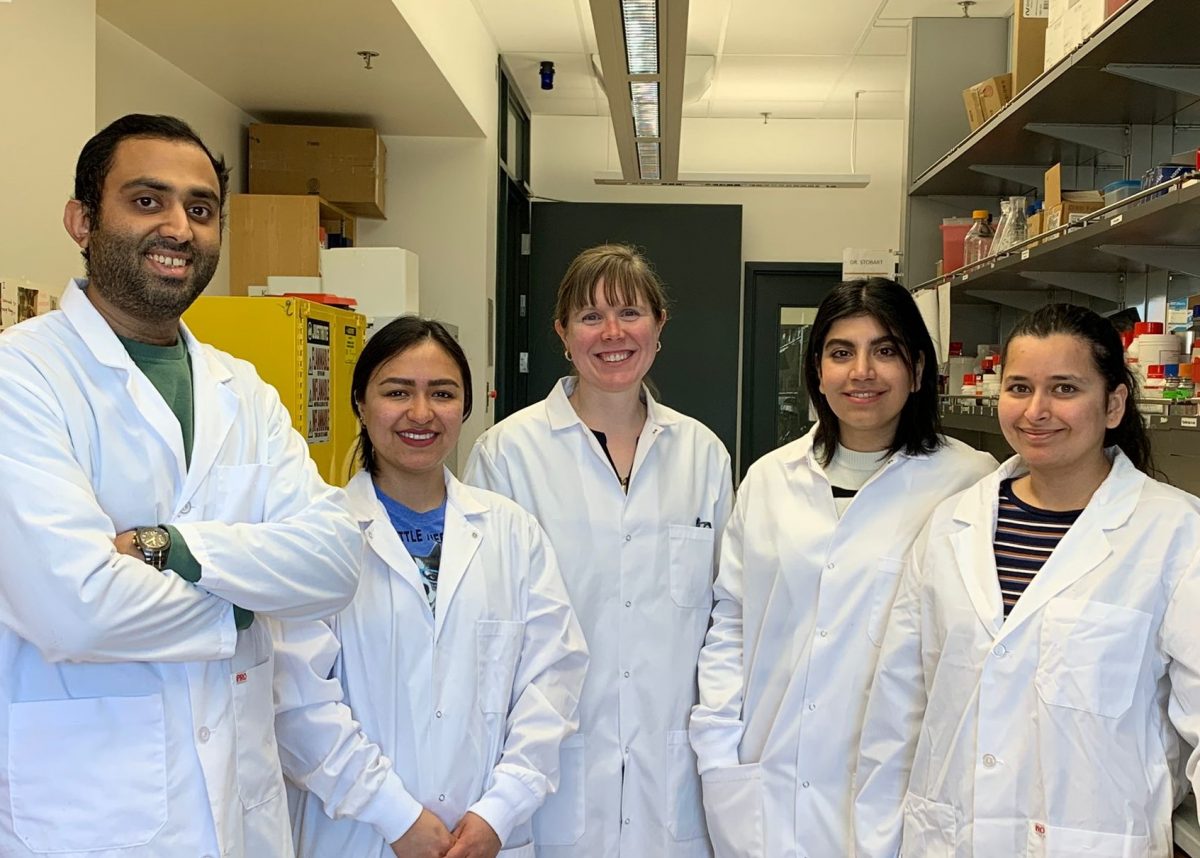
The Stobart lab team, from left to right: Shahin Shabanipour, Jessica Meza-Resillas, Jill Stobart, Noushin Ahmadpour and Meher Kantroo.
Pharmacy researchers shed light on how the brain processes the sense of touch
How does one distinguish the smoothness of silk or the coarse texture of sandpaper?
Individuals’ sense of touch is complex, requiring circuits in the brain to process incoming information much like a computer. These circuits are made up of electrically excitable cells, called neurons.
However, a new study led by College of Pharmacy assistant professor Dr. Jillian Stobart and graduate students Noushin Ahmadpour and Meher Kantroo has shown that brain cells called astrocytes fine-tune circuits that process the sense of touch. These findings were recently published in Nature Communications.
Neurons and astrocytes are known to send chemical messages to one another as a form of communication. This study found, for the first time, that astrocytes in the brains of mice use receptors called NMDA receptors to listen to circuits when the sense of touch is activated.
In mice without astrocyte NMDA receptors, neuronal circuits were impaired. Some circuits that normally process sensory information still worked, but some did not. This caused the mice to have problems with their sense of touch.
“Mice use their whiskers to touch and feel their environment, much like humans use their fingers,” said Stobart. “Mice are also very curious animals, and we took advantage of this to design a texture test with sandpaper.”
The mice were shown two objects covered in sandpaper that had the same texture and they were allowed to explore with their whiskers. Then researchers showed them a new object covered with a different sandpaper.
“If they can tell that the sandpaper is different, they will spend more time exploring the new object, thanks to their curious nature,” she noted.
Using this test, the team found that mice without astrocyte NMDA receptors struggled to identify the different sandpaper when the textures were similar. “Their sense of touch was not completely gone,” said Stobart. “But they had problems with acuity, meaning their sharpness and ability to tell the difference between similar surfaces was reduced.”
Stobart added that the information humans’ brains receive when touching an object is like rush hour traffic at a busy intersection. “Astrocytes are the traffic lights that direct the flow of information to their destination. When NMDA receptor signaling is disrupted in astrocytes, it’s like a broken left turn light. Some of the flow of information can continue straight through the intersection, but no left turn means that some information cannot reach its target.”
Stobart believes the study not only deepens understanding of the intricate communication between astrocytes and neurons in the brain, but also holds significance for neurological disorders.
“For example, patients with schizophrenia struggle with sensory impairments, including the processing of information from the sense of touch. Many of our research findings mimic how brain circuits operate in individuals with schizophrenia. It raises the possibility that astrocytes are the missing link in this disease.”
Armed with this knowledge, Stobart plans to study different drugs to potentially amplify astrocytes during information processing, opening the door for clinicians to treat patients with schizophrenia in different ways.






